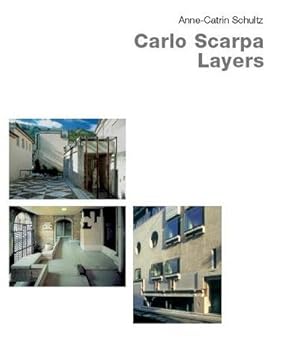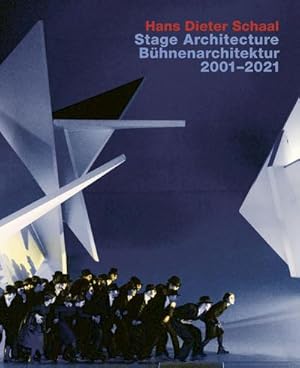edition axel menges gmbh dez 2022 (2 Ergebnisse)
Produktart
- Alle Produktarten
- Bücher (2)
- Magazine & Zeitschriften
- Comics
- Noten
- Kunst, Grafik & Poster
- Fotografien
- Karten
-
Manuskripte &
Papierantiquitäten
Zustand
- Alle
- Neu
- Antiquarisch/Gebraucht
Einband
- alle Einbände
- Hardcover
- Softcover
Weitere Eigenschaften
- Erstausgabe
- Signiert
- Schutzumschlag
- Angebotsfoto
Land des Verkäufers
Verkäuferbewertung
-
Carlo Scarpa - Layers
Verlag: Edition Axel Menges Gmbh Dez 2022, 2022
ISBN 10: 3930698145ISBN 13: 9783930698141
Anbieter: AHA-BUCH GmbH, Einbeck, Deutschland
Buch
Buch. Zustand: Neu. Neuware - In recent decades, Carlo Scarpa's relevance has been steadily on the rise. At a time when architects have to use existing city and building structures as a point of departure for their work, his oeuvre remains a source of inspiration. Buildings such as the Castelvecchio in Verona show us that architecture is capable of communicating its own history, has meaning, and develops a contemporary dynamic of its own. Scarpa's layered architecture makes visible the process of becoming and the time-related sedimentation of mater- ial and meanings. It is especially at points of transition and interface that layering becomes a narrative element that elucidates the tectonic qualities of the building. Overlaying includes leaving a record of how an object came into being - either by means of the sediments of its history or through the intervention of the architect. In this book Anne-Catrin Schultz presents her research about the phenomenon of layering in Carlo Scarpa's architecture. Layering describes the physical composition of layers defining space as well as the parallel presence of cultural referrals and formal associations imbedded in the physical layers. Scarpa's work is an embodiment of multidimensional layering and, at the same time, a focal point for architectural movements of his time that have stratification as their theme. In most buildings, the principle of layering may be regarded as something that is part of the nature of building. Functional conditions call for planes, elements, or 'layers' to provide the supporting structure, and others to protect from rain, cold or the heat of the sun. However, architec- tonic layering goes beyond merely fulfilling technical requirements the principle of layering may be used as a formative method that allows elements of different origins to be combined into a nonhierarchical whole. Layering exists in a realm of complexity and implies a capacity of being interpreted that goes beyond itself and creates references to the world at large. The first part of the book examines Scarpa's fields of influence and intellectual roots and puts them in perspective with former theories and their interpretation of architecture as layered, for example Gottfried Semper's theory of clothing. The second part displays an analysis of three major projects, Castelvecchio and Banca Popolare in Verona and the Querini Foundation in Venice. Anne-Catrin Schultz studied architecture in Stuttgart and Florence, and earned a Ph.D. in architecture theory at the University of Stuttgart. Following post-doctoral research at the MIT, she relocated to the San Francisco Bay Area and worked for several years with Turnbull Griffin Haesloop and Skidmore Owings & Merrill. She has taught as a lecturer at the University of California in Berkeley and is currently teaching at the California College of the Arts and at the San Francisco City College.
-
Hans Dieter Schaal, Stage Architecture 2001-2021 / Bühnenarchitektur 2001-2022
Verlag: Edition Axel Menges Gmbh Dez 2022, 2022
ISBN 10: 3869050306ISBN 13: 9783869050300
Anbieter: AHA-BUCH GmbH, Einbeck, Deutschland
Buch
Buch. Zustand: Neu. Neuware - Play-acting but above all the opera have only seemingly little to do with our everyday life. In fact opera is a very artificial work of art in which reality is nevertheless very much present, but condensed in such a way that it touches us throughout the ages. In experiencing opera performances, we thus become companions of the bard Orpheus in Monteverdi's opera L'Orfeo, who mourns the death of his beloved nymph Eurydice with his laments. We transform ourselves into sympathetic and compassionate brothers and sisters of Orpheus, Wozzeck, Tosca, Tristan, Isolde or Jenufa and are thus directly referred to the perils - and also pleasures - in our own lives.In order to make the visual and sound dimensions of an opera tangible for the audience, a close interaction of dramaturges, actors, singers, dancers, directors, stage designers and technicians is necessary. What role do stage designers play in this Don't some performances owe their success primarily to the work of the set designer The stage settings created by Hans Dieter Schaal, who has worked on almost all German stages, but also in many important international theatre venues, including Vienna, Salzburg, Zurich, Brussels, Paris, Moscow and San Francisco, have, over and over again, such a lasting effect due to their visual power that they remain in the memory of the audience for a long time.The first volume on Hans Dieter Schaal's stage settings covered the years 1982 to 2000, and this book now brings out a further volume dedicated to the works from 2001 to 2021. The book is captivating not only because of its abundance of mostly large-format photographs and many design drawings, but also because of the detailed texts written by Schaal himself, which reveal how intensively the artist deals with the respective work. As a result he invents images that often trigger a completely new perspective on the works.



